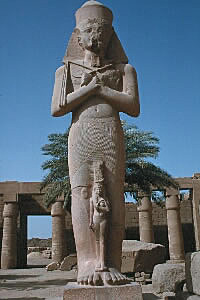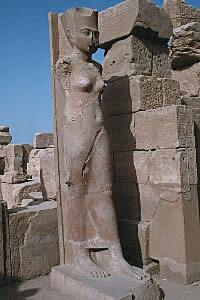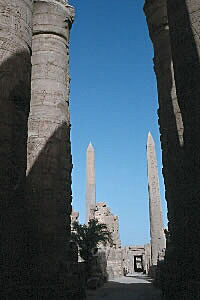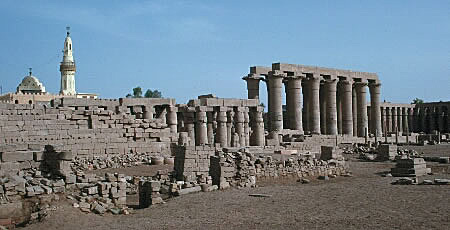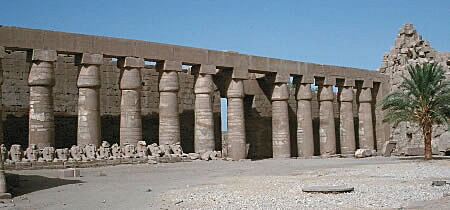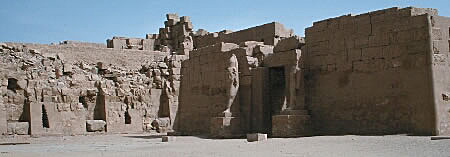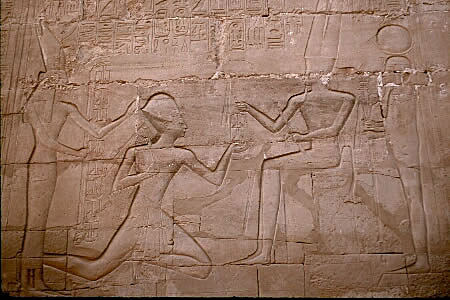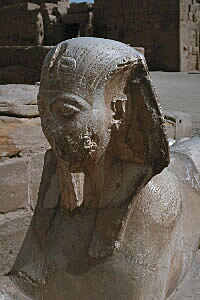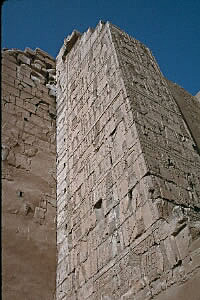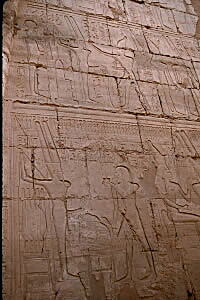 |
|
The temples of Luxor and Karnak are separated by about three kilometers with the sacred lake between them. The Temple of Karnak is as splendid at that of Luxor, perhaps even more so, and offers visitors some rare glimpses into the ancient past of Egypt. There are many wonderful things to see and enjoy here. Karnak is divided into three areas separated by rough brick walls. The largest area measures approximately 30 hectares and is the best restored area. This temple, dedicated to the god Amon, and is believed to be the oldest of the four temples at Thebes. To its left is the sanctuary of Manatee, the god of war and across from it is the sanctuary to the goddess Mut, Amon's wife, who, interestingly enough, was symbolically represented as a vulture. The size of the temple of Amon is amazing. It is the largest temple supported by columns in the world. The most imposing structure is the hypostyle hall which measures over 300 feet long and 159 feet wide. Within its area stands 34 columns, each almost 70 feet high, with open papyrus shaped capitals. Stones resting on top of these columns offer some of the best views of what the temple was like in ancient times. Protected from the Sun the hieroglyphics on their underside are still the brilliant colors they were thousands of years ago. The temple was built by various pharaohs over a long period of time. Amon-Ofis III built the twelve columns architraves, Ramses I began the decoration of this and it was continued by Seti I and Ramses the II. There are a number of obelisks on the temple grounds. Only one remains from Tutmose I and it measures almost 70 feet high and is estimated to weigh 143 tons. Another, higher still, was erected by Hatshepsut, daughter of Tutmose I, and it is said that she provided "bushels of gold as if they were sacks of grain" to build it. |
||||
|
|
|
|
||
| The Temple of Karnak was very elaborately carved with hieroglyphics honoring many different gods. One could spends months just gazing upon these inscriptions and imagining the people who carved them. Continue to the next page to see more of the Temple of Karnak. | ||||
